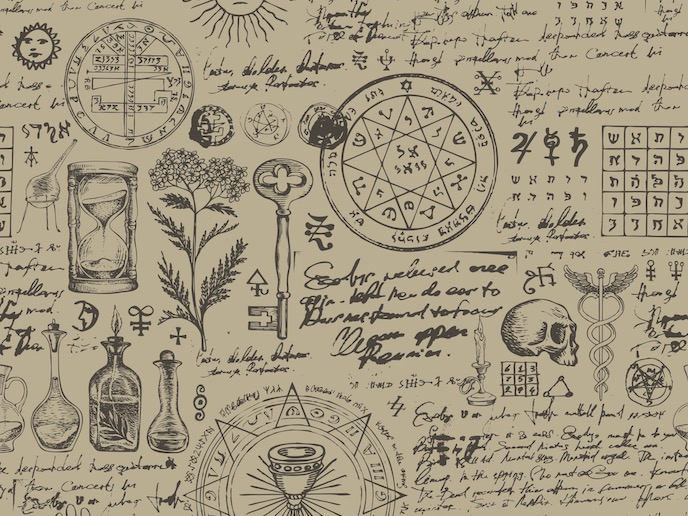Tracing the scientific contribution of female alchemists
Turning base metal to gold, finding the elixir of life: alchemy has inspired literature throughout the ages. In the mid 1990s academics reconstructed a Renaissance British male alchemical literary tradition, but their research was published before the study of early modern women’s writing was established as a field. Over the last few decades, feminist scholars have rediscovered 16th and 17th century female-authored works in print and manuscript. We can now use this rediscovered corpus of women’s writing to create a more expansive and inclusive understanding of early modern alchemical literary cultures. The current drive to encourage women into science benefits from a historical perspective: scientific engagement is not only a male phenomenon, there are notable female contributions to the history of science.
Hearing the forgotten voices
The WALCHEMY project brings to the fore the voices of these forgotten writers and reveals the diverse roles of female alchemists of the period. “The female alchemist takes on different guises in the writings of these women: she is a medical practitioner and distiller, a religious meditator, a female poet-maker, a female friend, patroness, a transformative widow-poet, and spiritual visionary,” explains principal investigator Sajed Chowdhury, based at Leiden University in the Netherlands. Chowdhury, who received support through the EU’s Marie Skłodowska-Curie Actions programme, says, “Medicine and theology were accepted concerns for many literate early modern women, and alchemy’s cross-fertilisation between the medicinal and the spiritual facilitated women’s involvement with it.” He offers Grace Mildmay (c. 1552-1620) as an example of why their role is important to understand. “Women like Mildmay were practising medical and spiritual alchemy in their households and local areas. If we are to gain a more accurate and inclusive understanding of Renaissance scientific, medical and spiritual cultures, then we must reintegrate into that history the identity and practices of the female alchemist.”
Reconstructing the history of the female alchemist
The project resulted in the first in-depth study, a monograph titled: ‘Women Writers and Alchemy in Early Modern Britain’, currently under peer review. “The 12 early modern women writers discussed in the monograph used alchemical discourse, I argue, to foreground the transformative physical, spiritual and intellectual agency of the female chemical practitioner,” Chowdhury comments. The monograph considers works by 12 women from a variety of different backgrounds, including: the elite gentlewoman, Lady Grace Mildmay (c. 1552-1620); the daughter of a court musician, Aemilia Lanyer (1569-1645); the Republican, Lucy Hutchinson (1620-1681); and the Protestant dissenting religious leader, Jane Lead (1624-1704). By analysing the writings of these women alongside one another, Chowdhury reconstructed a hitherto forgotten female alchemical literary culture which does not place the male chemical practitioner at its centre but brings to the fore the authority of the female alchemist. Chowdhury poured over records in the Northamptonshire Record Office which houses some of Grace Mildmay’s handwritten scientific papers. “These manuscript papers document Mildmay’s medical and chemical practices. Although Grace Mildmay was an elite woman, textual evidence survives to suggest that she was practising medicine and chemistry in a cross-class environment. In one extant letter addressed to Mildmay’s housekeeper, Bess, for example, Mildmay instructs Bess on how to concoct a healing balm,” adds Chowdhury.
The alchemical nature of literature
One of the ways in which scientific discourse and literary discourse overlapped in the Renaissance was through alchemy. Alchemy is cited in both scientific texts and literary works. In ‘An Apology for Poetry or The Defence of Poesy’ (printed in 1595), Sir Philip Sidney describes the poet as an alchemist because of his capacity to turn brass into gold. In ‘The Art of English Poesy’ (printed in 1589), George Puttenham compares the poet to an alchemical healer. “But for Sidney and Puttenham the poet-alchemist is exclusively male. My monograph explores how women writers constructed the identity of the female chemical practitioner and female alchemical author,” Chowdhury explains.
Keywords
WALCHEMY, alchemy, female alchemists, medicine, chemistry, history of science







